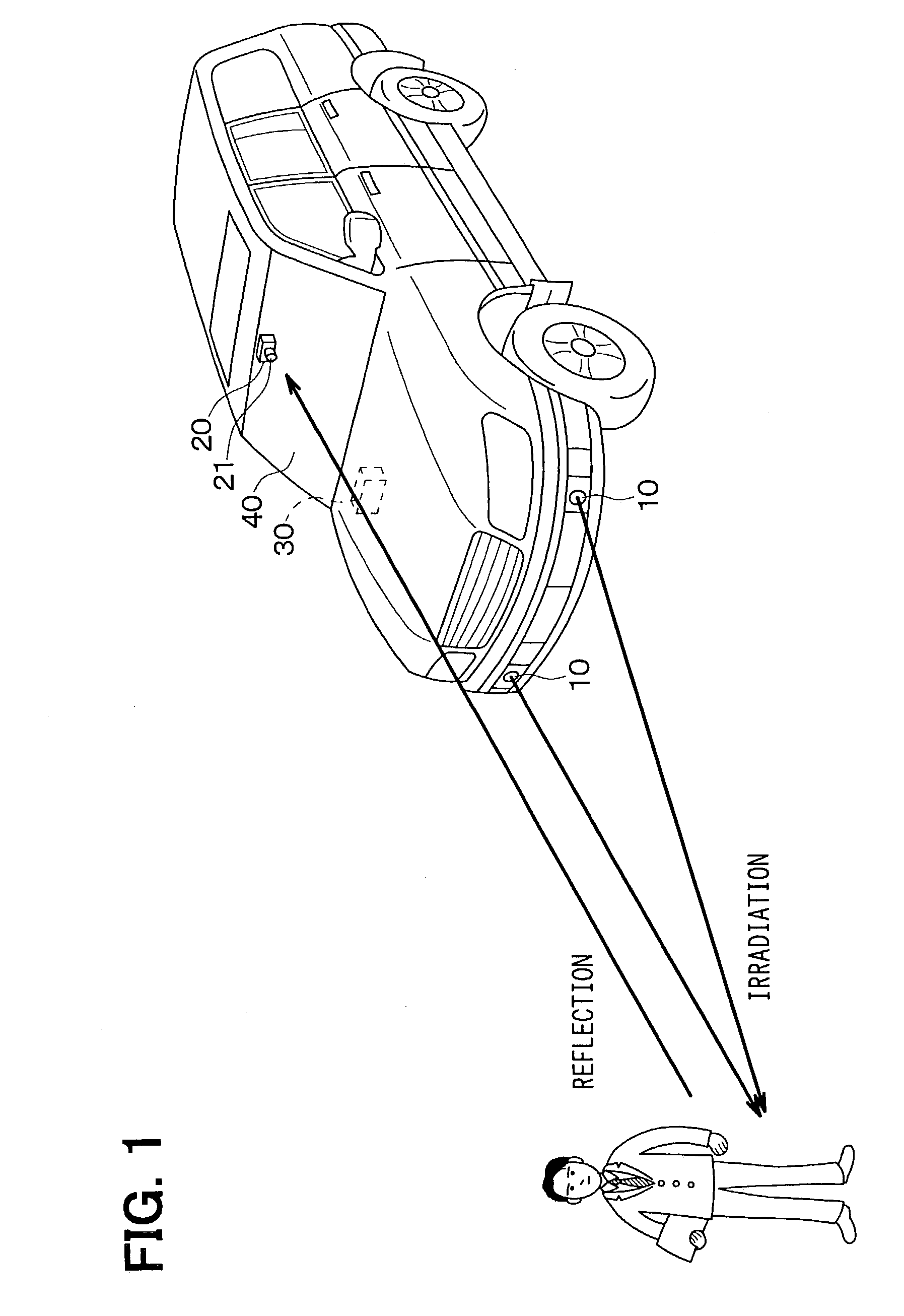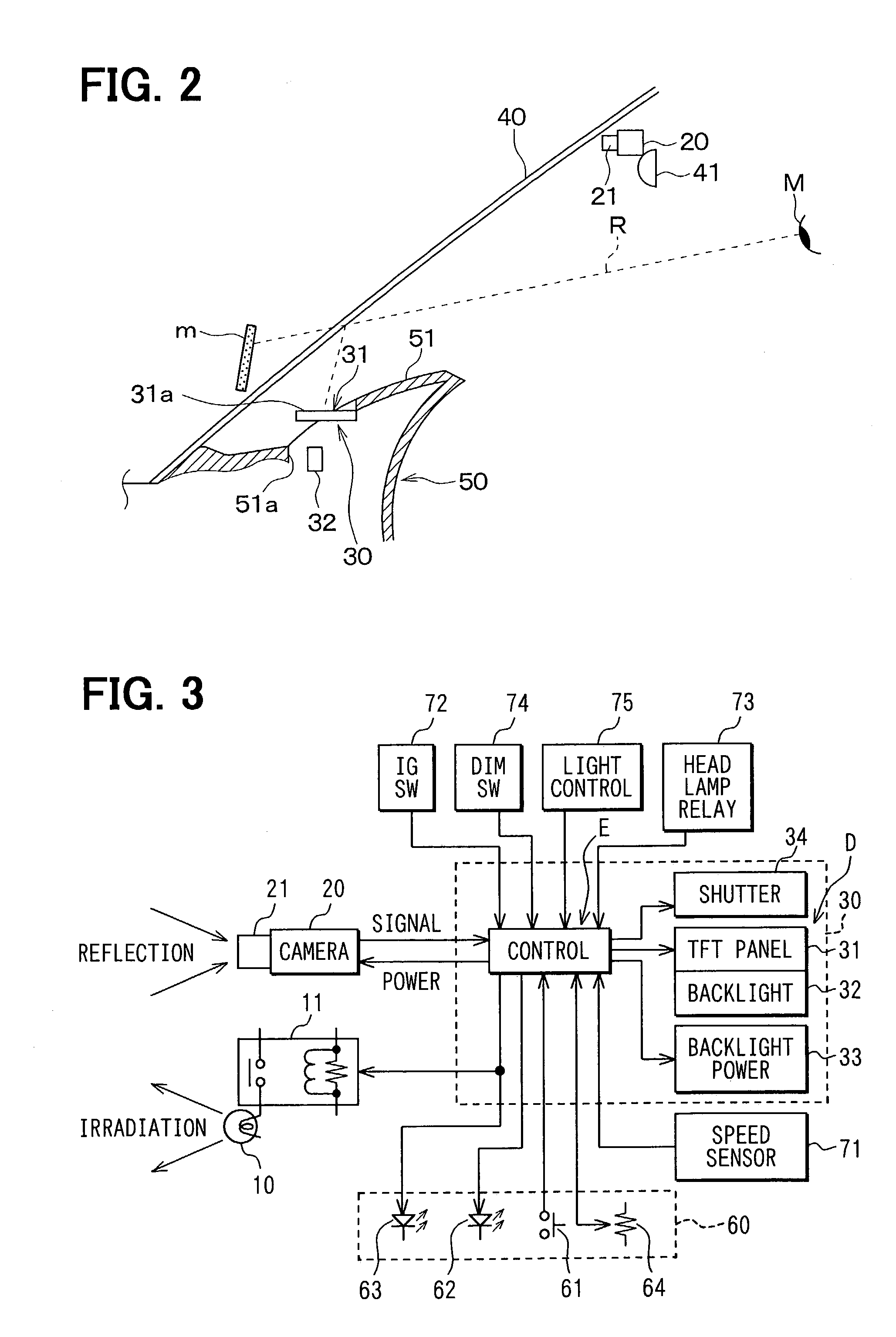Vehicular forward-vision display system decreasing luminance with decreasing vehicle speed
a technology of forward-vision display and luminance, which is applied in the direction of optical radiation measurement, identification means, color signal processing circuits, etc., can solve the problems of displaying various problems, unnecessary vision aids for displaying images located in a long distance, traffic accidents, etc., and achieve the effect of decreasing vehicle speed, reducing luminance intensity of displayed images, and reducing vehicle accidents
- Summary
- Abstract
- Description
- Claims
- Application Information
AI Technical Summary
Benefits of technology
Problems solved by technology
Method used
Image
Examples
first embodiment
[0023](First Embodiment)
[0024]A vehicular forward-vision display system as a first embodiment of the present invention is directed to a passenger vehicle shown in FIG. 1. The system includes infrared lamps 10 for irradiating a nighttime image ahead of the vehicle by infrared light, a night-vision camera 20 for scanning the nighttime images irradiated by the infrared light, and a head-up display 30 as a displaying device for displaying the scanned images on a front windshield 40 of the vehicle.
[0025]The infrared lamps 10 irradiate near-infrared light having a range of wave length between 800 nm and 1000 nm and are disposed under headlights in front of the vehicle.
[0026]The night-vision camera 20 is a known infrared camera that has a telephoto lens 21 and scans an image by accumulating static electricity in proportion to received infrared. The infrared camera 20 is disposed near an upper side of the windshield 40 in an interior of the vehicle and in a rear side of a rearview mirror 41...
second embodiment
[0056](Second Embodiment)
[0057]In a second embodiment, the luminance intensity of the displayed image is stepwise varied by determining whether the vehicle speed is higher than a predetermined speed, while it is varied gradually according to the vehicle speed in the first embodiment. In detail, luminance intensity of the displayed image is determined as shown in FIGS. 7 and 8.
[0058]At Step 120 in FIG. 7, whether the vehicle speed is increasing is determined. When the vehicle speed is determined to be increasing, whether the vehicle speed is lower than a predetermined speed V3 is determined at Step 131. When the vehicle speed is determined to be lower than the predetermined speed V3 (V3), the luminance intensity is determined to be the lowest value (MIN) at Step 141. When the vehicle speed is determined to be not lower than the predetermined speed V3 (V≧V3), the luminance intensity is determined to be the highest value (MAX) at Step 161.
[0059]By contrast, when the vehicle speed is de...
PUM
 Login to View More
Login to View More Abstract
Description
Claims
Application Information
 Login to View More
Login to View More - R&D
- Intellectual Property
- Life Sciences
- Materials
- Tech Scout
- Unparalleled Data Quality
- Higher Quality Content
- 60% Fewer Hallucinations
Browse by: Latest US Patents, China's latest patents, Technical Efficacy Thesaurus, Application Domain, Technology Topic, Popular Technical Reports.
© 2025 PatSnap. All rights reserved.Legal|Privacy policy|Modern Slavery Act Transparency Statement|Sitemap|About US| Contact US: help@patsnap.com



